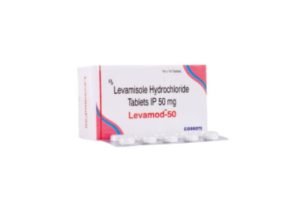
Trimethoprim + Sulfadiazine Overview
Trimethoprim + Sulfadiazine is a combination antibiotic used to treat bacterial and protozoal infections. It works by targeting two key steps in the bacterial folate synthesis pathway, which is crucial for bacterial DNA synthesis. This combination provides a synergistic effect, making it highly effective for certain infections, especially Toxoplasma gondii.
- Trimethoprim: Inhibits dihydrofolate reductase, preventing the reduction of dihydrofolic acid to tetrahydrofolic acid.
- Sulfadiazine: A sulfonamide that inhibits dihydropteroate synthase, blocking the incorporation of para-aminobenzoic acid (PABA) into folic acid.
Uses/Indications
The combination of Trimethoprim + Sulfadiazine is mainly used for:
- Toxoplasmosis: Especially in immunocompromised patients (e.g., HIV/AIDS) and in congenital toxoplasmosis. It is commonly combined with pyrimethamine for greater effectiveness.
- Urinary Tract Infections (UTIs): For infections caused by susceptible strains of Escherichia coli and Proteus species.
- Respiratory Infections: Such as bronchitis and pneumonia caused by susceptible organisms.
- Other Bacterial Infections: It can be used for skin infections or soft tissue infections caused by susceptible bacteria, though this is less common.
Dosage
The dosage of Trimethoprim + Sulfadiazine varies according to the infection being treated, age, and weight of the patient.
- Toxoplasmosis (Adults):
- Standard Dose: 500 mg Trimethoprim + 1,000 mg Sulfadiazine every 6 to 12 hours.
- For severe cases, especially in immunocompromised patients, higher doses may be needed, along with folinic acid supplementation (to prevent bone marrow suppression).
- Urinary Tract Infections:
- Adults: 160 mg Trimethoprim + 800 mg Sulfadiazine every 12 hours for 7-10 days.
- Pediatric Use: Dosage is generally weight-based, with typical pediatric doses being adjusted to provide about 6 mg/kg of Trimethoprim and 30 mg/kg of Sulfadiazine per day, divided into two or four doses.
Side Effects
Trimethoprim + Sulfadiazine can cause various side effects, which may range from mild to severe:
- Gastrointestinal Symptoms: Nausea, vomiting, diarrhea, and abdominal discomfort.
- Hypersensitivity Reactions: Including rash, fever, urticaria, and severe cases such as Stevens-Johnson syndrome and toxic epidermal necrolysis (TEN).
- Hematologic Effects:
- Bone marrow suppression (megaloblastic anemia, leukopenia, thrombocytopenia) due to Trimethoprim.
- Hemolysis in patients with G6PD deficiency.
- Renal Effects:
- Crystalluria or kidney stones, especially if inadequate hydration is maintained.
- Risk of interstitial nephritis.
- Liver Toxicity: Rare, but can cause hepatotoxicity.
- Hyperkalemia: Due to Trimethoprim’s effect on potassium excretion in the kidneys.
- Photosensitivity: Increased risk of sunburn or skin rashes with sun exposure.
- Kernicterus: Especially in neonates, Sulfadiazine can cause kernicterus by displacing bilirubin from albumin.
Contraindications
Trimethoprim + Sulfadiazine is contraindicated in:
- Hypersensitivity to sulfonamides or trimethoprim.
- Pregnancy: Especially in the third trimester due to the risk of kernicterus in newborns and teratogenic effects.
- Neonates: Due to the risk of kernicterus.
- Severe liver or renal impairment (without dose adjustment).
- G6PD Deficiency: Can lead to hemolysis.
- Megaloblastic Anemia: Due to folate deficiency.
- Porphyria: Can precipitate acute attacks.
Drug Interactions
- Warfarin: Trimethoprim + Sulfadiazine can enhance the anticoagulant effect of warfarin, increasing the risk of bleeding.
- Methotrexate: Competes for renal excretion, increasing the toxicity of methotrexate.
- Phenytoin: Prolongs the half-life of phenytoin, increasing the risk of toxicity.
- Oral Hypoglycemic Agents: May enhance the hypoglycemic effect, increasing the risk of low blood sugar.
- ACE inhibitors or ARBs: May worsen hyperkalemia, particularly in elderly patients.
- Ciclosporin: Can reduce the efficacy of ciclosporin, increasing the risk of organ rejection in transplant patients.
Resistance
Bacterial resistance to sulfonamides and Trimethoprim has increased significantly in recent years, especially among:
- Gram-negative bacteria: Resistance in Escherichia coli and Klebsiella pneumoniae is becoming more common.
- Staphylococcus aureus: Certain strains, including Methicillin-resistant Staphylococcus aureus (MRSA), can also show resistance.
Resistance mechanisms include:
- Mutations in the bacterial dihydropteroate synthase and dihydrofolate reductase genes, reducing drug binding.
- Overproduction of PABA, overcoming the inhibitory effects of sulfonamides.
Special Considerations
- Hydration: Adequate fluid intake is essential to prevent crystalluria and kidney stone formation.
- Folic Acid Supplementation: Particularly when used for toxoplasmosis, folinic acid (leucovorin) supplementation is recommended to reduce the risk of bone marrow suppression due to Trimethoprim.
- G6PD Deficiency: Patients should be screened for G6PD deficiency before starting therapy, especially in populations where this condition is more common.
- Renal and Liver Function Monitoring: Regular monitoring is advised in patients with pre-existing renal or hepatic impairment.
- Elderly Patients: Are at higher risk for hyperkalemia and renal toxicity, requiring careful monitoring of serum potassium levels.
- Pregnancy and Neonatal Use: Avoid use due to risks of kernicterus and teratogenicity.
Conclusion
Trimethoprim + Sulfadiazine is an effective combination antibiotic, particularly useful in the treatment of toxoplasmosis and urinary tract infections caused by susceptible organisms. However, its use is limited by increasing resistance, potential for severe side effects, and contraindications in certain patient populations (such as pregnant women and neonates). Careful monitoring of renal function, electrolyte levels, and blood counts is essential during treatment. The combination is most effective in immunocompromised patients, where its benefits often outweigh the risks.







